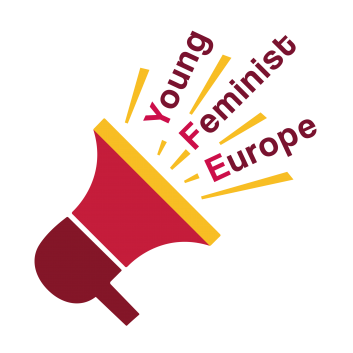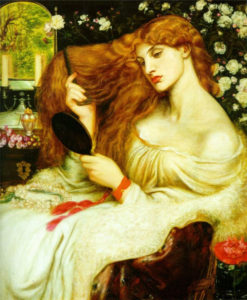There are a lot of stereotypes and standards that women are subjected to in their daily lives, but the question of how their bodies should look like is certainly one of the most important ones. The perception of the ideal female body is dynamic and can change through time and also vary between different cultures and societies – with the media playing an important role. Whereas some societies get more and more influenced by the Western beauty standard of slimness, on the other hand there are also cultures where people are simply starting to accept their larger sizes.
It might seem unimaginable today, but not so much time ago, being overweight used to hold a high status for both men and women. In the 19th century, a shapely figure was the norm, and this ideal was represented by artists like Dante Gabriel Rossetti or William-Adolphe Bouguerea.
After Post World War II, the ideal body sizes started to decrease and since then the average body mass index of women presented in different types of advertisements declined from about 27 to 18. Now we are in a situation where being curvier than the ideal female body shape has become socially stigmatized.
Differences between societies
However, there are ethnicities and cultures with differing expectations, based on both social and cultural factors. For example, in black culture black women are encouraged to be curvy and plump in areas such as the buttocks, legs and bust. This is seen as representing well-being. Similarly, in Arab countries the average sexually desirable women have a higher body mass index than Western women. Meanwhile, in South America most men like chubby women with wide hips. Nonetheless, women are supported to have slimmer waist and bust than buttocks. However, countries like Japan are moving towards body ideals of Western society, like slimness. In China, a diversity of body sizes prevails, but the same beauty standards apply for all other aspects. In short, it differs to what extent individuals and societies are affected by the media and what kind of body shapes is attractive to them. What is normal in one society, could be seen as deviant in another.
Globalising beauty standards
The most popular expectation for women concerning their bodies is to be thin, toned and in proportion. The spread of the Western female beauty ideal is due to the wider reach of Western media which mainly focuse on what is attractive for Western societies, and reflect white standards concerning skin colour or hair.
Male-dominated media – a multiplier for perceptions of the ideal female body
Women are then confronted with a toxic situation, where the beauty ideal is actually unattainable. They still try to achieve it, imposing high expectations on themselves on how they should look like. The consequence of this is that they struggle to have confidence in their bodies, sometimes get caught in diets, other body-optimization methods like plastic surgery, or even develop eating disorders.
Summary
But if we want women to be truly equal, the image of the ideal female body needs to be widened. We should recognize that women have all shapes and sizes, encourage body positivity and get rid of the unhealthy fixation on women’s bodies. Fortunately, in some societies this seems to be already happening: A few recent reports in the media demonstrate that having body fat now seems to be the norm in some countries USA or UK. People are starting to simply accept their larger sizes. This, most definitely, is an encouraging development.
Kasdieniniame gyvenime moterys ištisai susiduria su įvairiais stereotipais, vienas iš populiariausių – idealios figūros paieškos. Idealios figūros savoka labai priklauso nuo laikotarpio, kultūros, esamos visuomenės ir žinoma žiniasklaidos. Vienos visuomenės seka Vakarų standarto – lieknumo kulto, kitos vis labiau pripažista moterų figūrų įvairovę.
Dar visai neseniai antsvoris ir stambesni žmonės, tiek vyrai tiek moterys, simbolizavo aukštą statusą visuomenėje. XIX amžiuje idealia laikyta buvo figūringą kūną turinti moteris, tai atsispindėjo Dante Gabriel Rossetti ir William-Adolphe Bouguerea meno darbuose.
Po II Pasaulinio karo moterų kūnai pradėjo mažėti, kūno masės indekas (KMI) reprezentuojamas reklamose nukrito nuo 25 KMI iki 17 KMI. Taigi dabar stambesnė ar figūringesnė moteris gali būti socialiai atstumta.
Įvairių visuomenių skirtumai
Įvairūs kultūriniai ir socialiniai veiksniai daro skirtingą įtaką įvairioms tautybėms ir kultūroms. Juodaodžiai mėgsta ir skatina savo moteris būti stambesnėmis ir turinčioms formas ypač krūtinės, sėdmenų ir kojų srityje. Tai laikoma sveikumo ir vaisingumo įrodymu. Panašiai ir Arabų šalyse, seksualia moterimi laikoma ta, kurios KMI yra gerokai didesnis nei Vakarų šalyse vyraujantis idealios moters standartas. Tuo tarpu, Pietų Amerikoje vertinamos moterys turinčios plačius klubus. Vis dėl to, moterys yra skatinamos turėti lieknesnį , bei siauresnį liemenį ir krūtinę, nei klubai. Tačiau Japonijoje, kuri kopijuoja ir stengiasi būti Vakarų šalis, dievinamas lieknumas. Kinijoje – vyrauja figūrų įvairovė, tačiau pats grožio supratimas ir išraiška yra monotoniška. Trumpai tariant, labai skiriasi kiek žmonės ir pati visuomenė yra paveikta žiniasklaidos. Kas yra norma vienoje visuomenėje, gali būti anomalija kitoje.
Globalūs grožio standartai
Liekna, pasportavusi ir proporcinga moteris – populiariausias stereotipas. Tokio stereotipo populiarumas yra paveiktas Vakarų kultūros, kuri yra dominuojanti žiniasklaidoje. Net juodaodžiai vyrai idealizuoja tokias populiarias garsenybes kaip Beyoncé ar Halle Berry, kurios juodaodės, bei figūringos moterys, bet jų šviesinta oda ir plaukai puikiai atspindi Vakarų visuomenės grožio stereotipus.
Vyrų dominavimas žiniasklaidoje
Žiniasklaida yra ta terpė, kurioje sklinda grožio sukuriami stereotipai. Žiniasklaida yra pramonė, kurioje dominuoja vyrai, bei jos produkcija yra pritaikyta pagal jų norus. Tokiu atveju moterų kūnai tampa prekėmis ar materialiais daiktais skirtais savo malonumui ir norų patenkinimams. Tai turi įtaką moterims dirbančioms šioje industrijoje: stambios moterys dažniausiai gauna antraplanius vaidmenis ir užima tik 20% televizijos, lieknos – gauna pagrindinius vaidmenis ir užima didžiąją dalį rinkos. Šiuolaikinės technologijos suteikia galimybę redaguoti kūnus kartu iškriepiant tikrovę. Taip tokios nuotraukos tampa iliuzija, kuria žmonės patiki i svajoja tokiais tapti.
Santrauka
Norint , kad visos moterys jaustųsi lygiavertės, idealaus kūno samprata turi keistis. Turime nustoti vertinti moteris pagal stereotipus ir suprasti, kad moterų būna labai skiritngų ir visos jos gražios. Remiantis pranešimais žiniasklaidoje, JAV ir Didžiojoje Britanijoje visuomenė jau juda ta kryptimi -būti stambesniu yra visiškai normalu. Šiose šalyse žmonės tiesiog priima save ir kitus kokie jie yra.


![The Harvester (oil painting by William-Adolphe Bouguereau) William-Adolphe Bouguereau [Public domain], via Wikimedia Commons](https://www.youngfeminist.eu/wp-content/uploads/2016/05/William-adolphe_bouguerea_the_harvester-238x300.jpg)
![Women’s Participation in Hungarian Trade Unions – Nök a szakszervezetben?! [EN/HU]](https://www.youngfeminist.eu/wp-content/uploads/2016/05/148ucw-6-13-41-29-150x150.jpg)

![“Stop bawling” – Obstetric violence in Hungary: Ne üvöltsön már annyira” – Szülési jogok Magyarországon [EN/HU]](https://www.youngfeminist.eu/wp-content/uploads/2016/08/12440618_1754445548108320_7624536279660482713_o-150x150.jpg)
Herpes viruses share a curious feature because they can reside in the switchboard for extended periods of time, where they stay
dormant for extended periods of time, sometimes years.